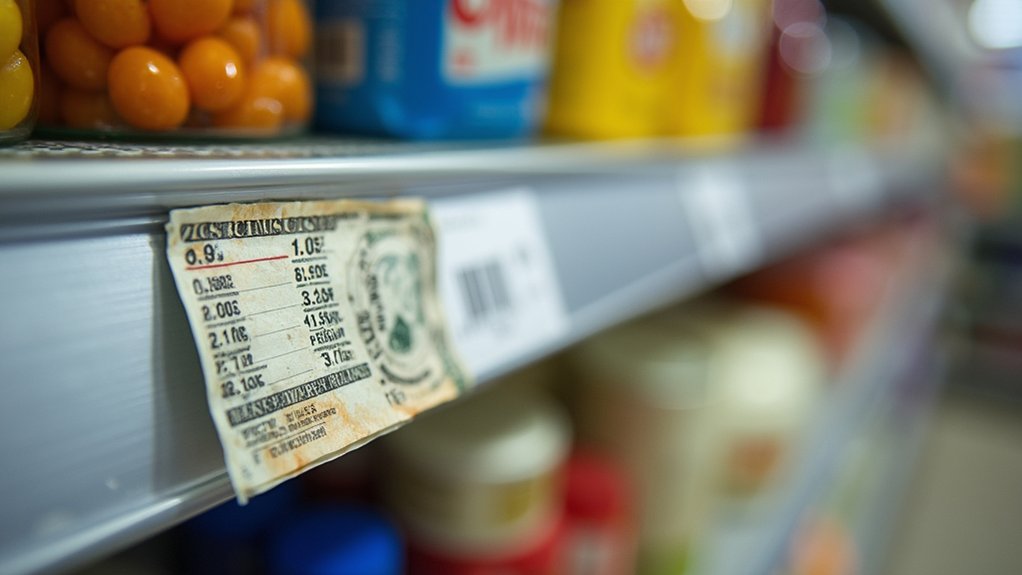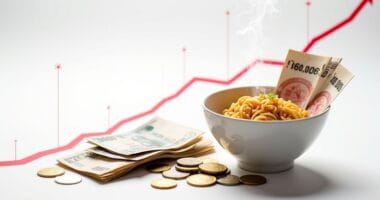March’s inflation dip to 2.4% looks good on paper, but don’t be fooled. While gas prices dropped 9.8%, core costs remain stubbornly high at 3% – well above the Fed’s target. Medical services jumped 3.8%, natural gas spiked 9.4%, and food prices keep climbing. The apparent improvement masks deeper economic pressures, with new tariffs on Chinese goods threatening to shake things up. The real story lies beneath those headline numbers.

Three key indicators paint a surprising picture of America’s economic health this March, as inflation dropped to its lowest level since fall 2024. The headline number looks great – annual inflation down to 2.4% from February’s 2.8%. Monthly CPI even fell 0.1%, the first decline in five years.
But don’t break out the champagne just yet.
Dig deeper, and things get messier. Core inflation, while down to 3%, is still running hotter than the Fed’s 2% target. And that pesky median CPI? It’s showing the biggest monthly jump in a year at 0.35%.
Sure, plunging gas prices (down 9.8% year-over-year) made the overall numbers look pretty. But that’s like putting lipstick on a pig.
Gas prices may be down nearly 10%, but that cosmetic improvement can’t mask the underlying economic challenges.
The real story is in the details. Airfares stopped their free fall. Medical costs keep climbing, with hospital services up 3.8% annually. Natural gas utilities have surged with a concerning 9.4% price increase.
And while tourists might be loving those cheaper hotel rooms (down 3.5%), new car prices are creeping up again. Food prices? Still rising. Because apparently, we all need to eat. Price per unit changes in the stock market suggest broader pricing pressures could be easing.
Here’s where it gets interesting – and by interesting, we mean potentially problematic. New tariffs are lurking around the corner like uninvited party guests. A 10% duty on Chinese imports plus higher steel and aluminum tariffs haven’t shown up in March’s numbers yet, but they’re coming.
Some consumers are already rushing to buy vehicles before prices jump.
The Fed’s probably feeling cautiously optimistic about getting closer to its 2% inflation target. But they’re not popping confetti just yet. Those rising core and median measures are like warning flares in the night sky.
Meanwhile, the stronger dollar is helping keep import prices in check, and weak international tourism is dragging down travel costs.
But with business costs expected to reflect those tariffs later this year, this inflation story is far from over. Stay tuned – this economic soap opera is just getting started.





